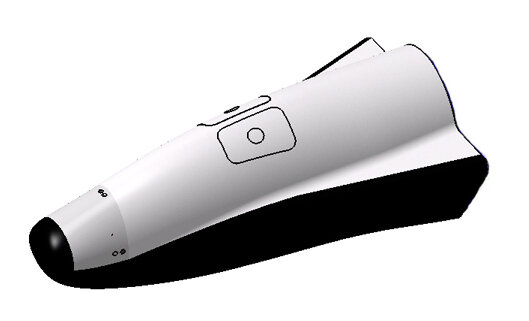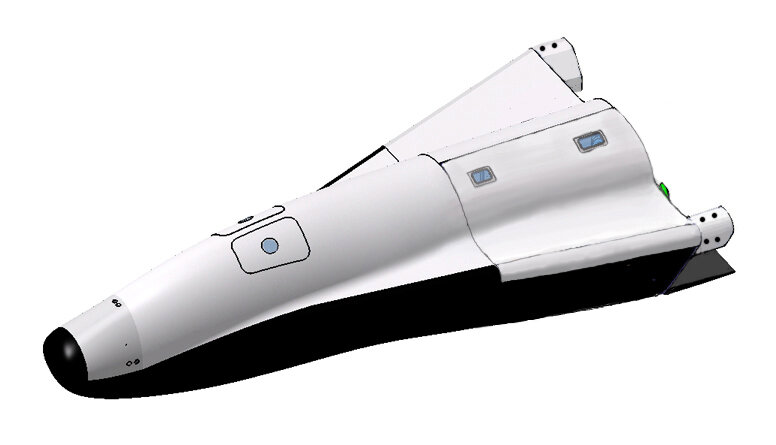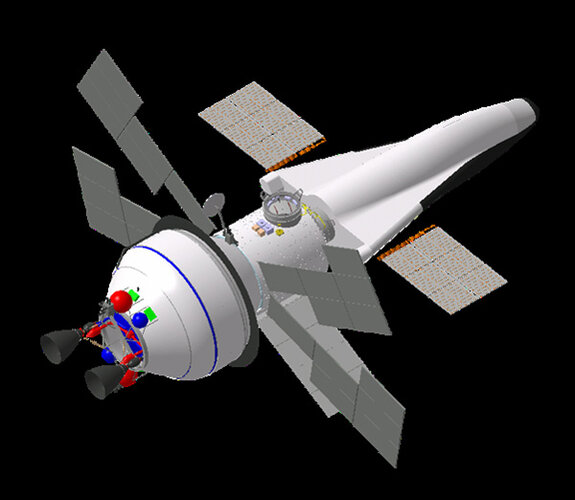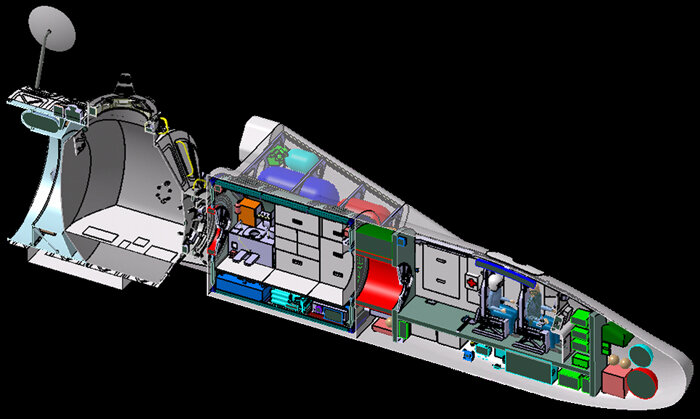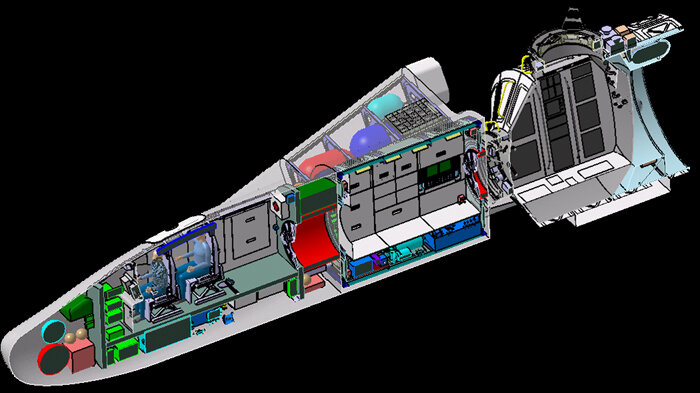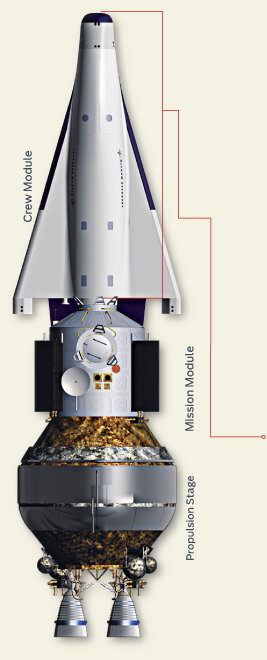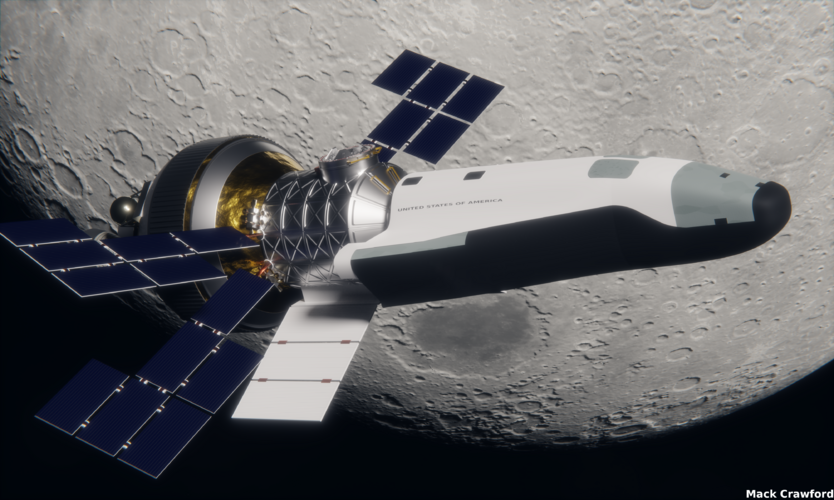- Joined
- 13 August 2007
- Messages
- 7,876
- Reaction score
- 9,002
sounds insane, more like cheap "Sci-Fi" TV Movies of Germans Networks
but like History shows, some one proposed that To NASA !
Cislunar Application of the Space Shuttle Orbiter
Project V1086, J. E. Blahnik; undated (post-July 1971)
attachment to memorandum from Director, Science and Applications,
to Manager, Space Shuttle Program, NASA Johnson Space Center, December 14, 1971.
Idea: refuel the Orbiter in space launch it to Moon Orbit, in cargobay a Lunar lander.
Mission
-Orbiter launch in 100-mile Earth polar orbit.
-10 to 12 shuttle flights refuel the orbiter with 444,000 pounds of propellant
(don't ask me about boil off by Fuel )
-last shuttle flights brings the lunar lander and 3-person lunar crew
Total weight is up to 1.6 million pounds at departure from Earth orbit.
-TLI of Orbiter with 72-hour coast to the moon.
-LOI into Lunar polar orbit
-the manned Lunar Lander is deployed from Cargo bay and lands on Moon
the 3 person make a 3-to-4-week exploration in same Time the Orbiter crew scan the lunar surface
-Lander ascent stage returns to orbiter (with 500 pounds of lunar samples. this stage is returned to Earth and reused.)
-EOI of Orbiter to leave Moon
-Halfway the orbiter makes a braking burn to reduce atmosphere entry velocity
-Orbiter makes aerobraking maneuver in Earth's atmosphere to further reduce entry velocity
-then from a 100-mile Earth orbit a save return.
but like History shows, some one proposed that To NASA !
Cislunar Application of the Space Shuttle Orbiter
Project V1086, J. E. Blahnik; undated (post-July 1971)
attachment to memorandum from Director, Science and Applications,
to Manager, Space Shuttle Program, NASA Johnson Space Center, December 14, 1971.
Idea: refuel the Orbiter in space launch it to Moon Orbit, in cargobay a Lunar lander.
Mission
-Orbiter launch in 100-mile Earth polar orbit.
-10 to 12 shuttle flights refuel the orbiter with 444,000 pounds of propellant
(don't ask me about boil off by Fuel )
-last shuttle flights brings the lunar lander and 3-person lunar crew
Total weight is up to 1.6 million pounds at departure from Earth orbit.
-TLI of Orbiter with 72-hour coast to the moon.
-LOI into Lunar polar orbit
-the manned Lunar Lander is deployed from Cargo bay and lands on Moon
the 3 person make a 3-to-4-week exploration in same Time the Orbiter crew scan the lunar surface
-Lander ascent stage returns to orbiter (with 500 pounds of lunar samples. this stage is returned to Earth and reused.)
-EOI of Orbiter to leave Moon
-Halfway the orbiter makes a braking burn to reduce atmosphere entry velocity
-Orbiter makes aerobraking maneuver in Earth's atmosphere to further reduce entry velocity
-then from a 100-mile Earth orbit a save return.
Attachments
Last edited:

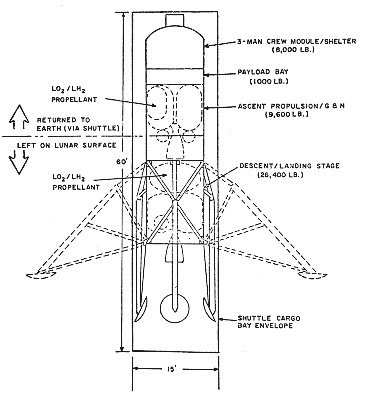



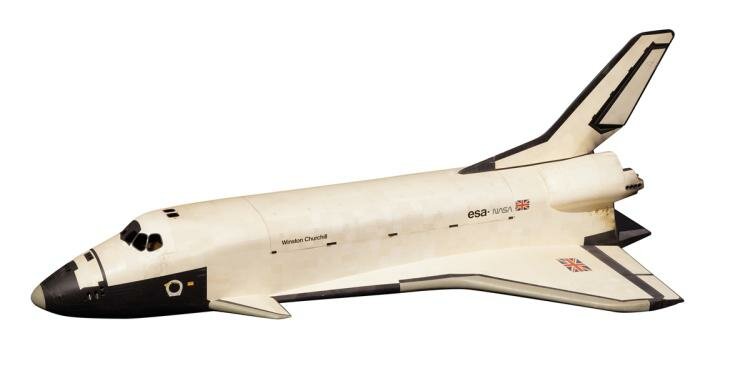
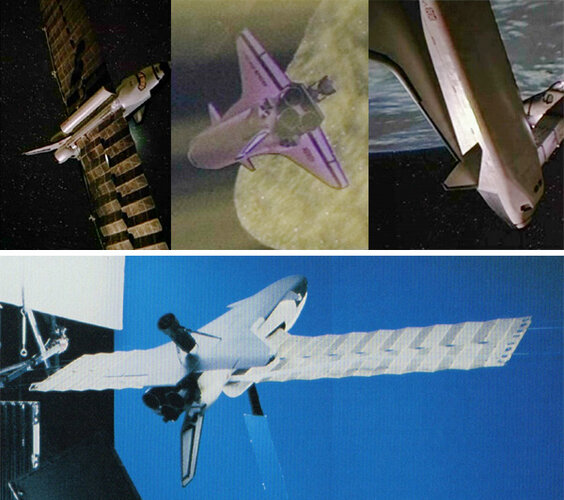
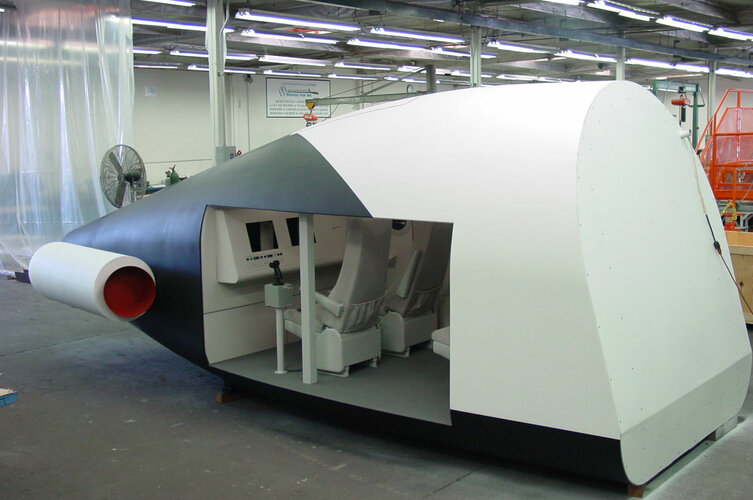
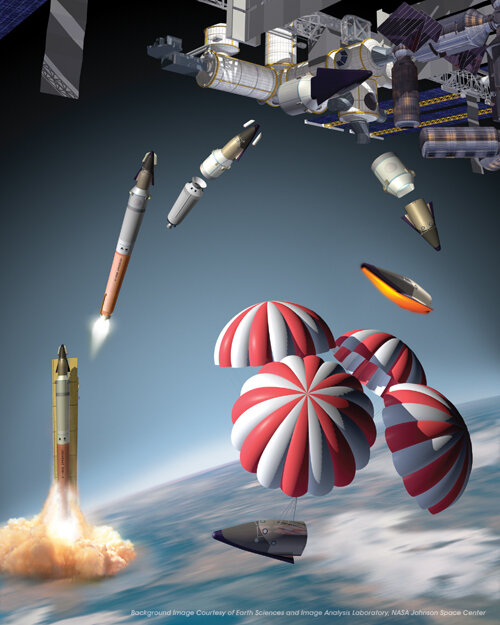
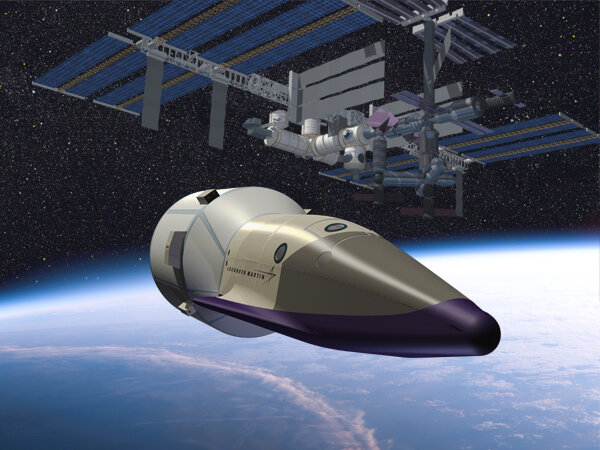
![an_31_1[1].jpg](/data/attachments/269/269025-1234051ed953cca981de5176821bdf7a.jpg)
